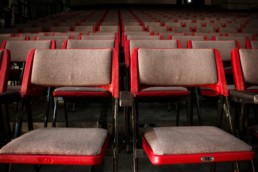W ROSS ASHBY
Av Patrik Öhman
Ashbys verk från 1952 “Design for a Brain” behandlade djuplodande idén om adaptivt beteende och hjärnan för att:
“show that a system can be both mechanistic in nature and yet produce behaviour that is adaptive“.
(Ashby second edition 1960 s. 1)
Han försökte skapa en mekanisk modell av hjärnan och dess förmåga att lära sig. I boken introducerade han begreppet “ultrastability“, en form av dubbel återkoppling som är närvarande i något system som har adaptivt beteende som förändras genom interaktion med omgivningen. Detta koncept bildade senare grunden för Argyris och Schöns arbete med dubbel-loop-lärande.
Ashby diskuterade konceptet “variety“: antalet möjliga tillstånd som ett system kan ha, vilket i ett system med mer än ett litet antal variabler kommer att vara ett mycket stort antal. Han tillämpade begreppet variety på frågor om reglering – kontroll, styrning eller ledning av ett större system med ett mindre system – där hänsyn togs till relationen mellan “variationen” hos regulatorn och i det system som regleras. Hans Law of Requisite Variety säger att regulatorn måste behärska lika mycket variation som det reglerade systemet. Som Ramage och Shipp uttryckte det (2009 s. 48):
“If there is insufficient variety in the regulator, the only solutions are either to increase the variety in the regulator or to decrease the variety in the system being regulated it is not the case that the variety of the regulator must be identical to the variety of the system regulated, but there is a strict mathematical (logarithmic) relationship between the two, and the regulator must contain sufficient variety to cope“.
Jackson (2003 s. 9) uttrycker det något annorlunda:
“Systems can only be controlled if the would-be-controller can command the same degree of variety as the system. Today systems are complex and change rapidly; they exhibit high variety. Managers need to pay attention to reducing the variety of the system they are seeking to control and/or to increasing their own variety. This process of balancing varieties is known as variety engineering“.
Ashby var en innovatör som låg till grund för många efterföljande systemtänkare såsom Stafford Beer, von Bertalanffy, Chris Argyris och Donald Schön. Hans böcker om cybernetik ansågs vara landmärken på fältet och var mycket inflytelserika.
Referenser
Ashby, W.R. 1956 ‘An Introduction to Cybernetics’. Methuen, London.
Ashby W.R. 1958 ‘Requisite variety and its implications for the control of complex systems’, Cybernetica 1:2, s. 83-99
Ashby W.R. 1960 ‘Design for a Brain: the origin of adaptive behaviour’ (2nd edition) Chapman and Hall, London
Ramage M och Shipp K 2009 ‘Systems Thinkers’ Open University: Milton Keynes



































